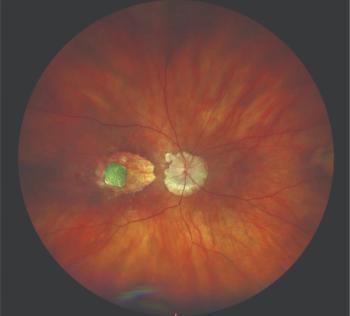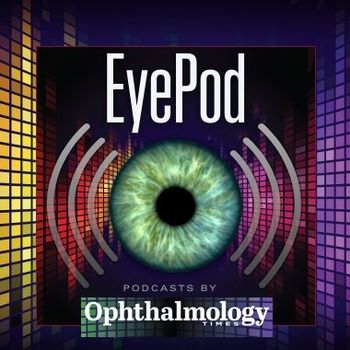
- Ophthalmology Times: January 2024
- Volume 49
- Issue 1
Artificial intelligence for the early detection of ectatic corneal diseases
Advances enhance clinical decision-making in screening cases at risk of iatrogenic ectasia.
The rapid evolution of artificial intelligence (AI) has given rise to several technological innovations, including new applicable solutions for ophthalmic clinical practice. Machine learning is a subset of AI that utilizes mathematical algorithms and computer processing power to analyze and find underlying patterns embedded in large volumes of data, thus augmenting human interpretation of clinical information.1 This approach facilitates the classification tasks by combining and integrating multimodal data from different sources, which can improve the overall diagnostic efficiency.2 One of the most promising applications of this technology is the development of new diagnostic algorithms for identifying ectatic corneal diseases.3
Recently, there has been a growing clinical interest in detecting mild forms of corneal ectasia. Indeed, the diffusion of refractive surgery has driven the need to identify subclinical forms at an elevated risk for iatrogenic progressive ectasia after laser vision correction procedures. Furthermore, an early diagnosis of ectatic corneal diseases has become increasingly relevant due to the introduction of new treatments, such as collagen cross-linking, that can slow or halt the progression of the disease.2
Identifying Ectasia
The main challenge in diagnosing early keratoconus is that slit-lamp examination is typically unremarkable, and the distinctive signs of advanced ectasia, such as Vogt striae and Fleischer ring, are usually absent. As such, other diagnostic techniques have been proposed over the years to identify the condition before the occurrence of significant visual loss.
Placido disc–based corneal topography allows for the characterization of the anterior corneal surface, enabling the detection of mild-to-moderate forms of keratoconus. Conversely, corneal tomography can evaluate the whole cornea obtaining information from the anterior and posterior surfaces. Since posterior elevation is often the first sign of the disease, tomographic analysis is considered more sensitive than Placido-disc topography in identifying keratoconus.4,5 The Belin/Ambrósio Enhanced Ectasia Display (BAD-D) available on the Oculus Pentacam is a comprehensive screening tool combining elevation-based and pachymetric corneal evaluation. The BAD-D is considered one of the Scheimpflug-based indices with the most outstanding predictive accuracy to detect ectatic corneal diseases.6
Nevertheless, the diagnostic accuracy of corneal tomography alone can be unsatisfactory in very mild or subclinical cases. In clinical studies, eyes with typical front surface topography in patients who have a clinical form of ectasia in the fellow eye are frequently used as models of subclinical ectasia.
The sensitivity for tomographic indices can be reduced in these cases7 as the corneal shape is frequently not yet altered. However, performing laser refractive surgery in patients with subclinical or forme fruste keratoconus would still likely result in an iatrogenic ectasia.
New technologies, including epithelial mapping and measurement of corneal biomechanics, have been developed to overcome these limitations and increase diagnostic sensitivity.
Relevance of Corneal Biomechanics
The measurement of corneal biomechanics has recently emerged as a novel promising technology for identifying subclinical ectasia.8 In recent years, the general interest in corneal biomechanics among clinicians and researchers has rapidly increased. Figure 1 shows all scientific publications on corneal biomechanics indexed on PubMed and grouped by year of publication. Of 2812 total articles published since the 1950s, 1974 articles (70.2%) were published in the last decade, and 943 (33.5%) in the last 5 years.
The Corvis ST (Oculus Optikgeräte) is a noncontact tonometer that employs an ultrahigh-speed Scheimpflug camera to record in vivo the cornea’s response to an air puff–induced deformation (Figure 2). Results from several studies demonstrated that keratoconic corneas show abnormal deformation amplitudes compared with healthy ones.9-11
Although first-generation biomechanical parameters showed a relatively low accuracy for detecting mild forms of ectatic corneal diseases, novel parameters such as the Corvis Biomechanical Index were shown to correctly classify eyes with clinical keratoconus in 98.8% of cases, with 98.4% specificity and 100% sensitivity.12
Integrating Tomography and Biomechanics
The Tomographic/Biomechanical Index (TBI) is a parameter that integrates the corneal morphology from the Pentacam with biomechanical parameters from the Corvis ST. The index demonstrated the ability to detect subclinical or forme fruste keratoconus accurately. This was proved in eyes with normal topography and very asymmetric ectasia in the fellow eye.13 Thus, the TBI is now programmed and included in the commercial Oculus software (Figure 3).
Figure 3 shows a very relevant case example of a patient with normal tomography who developed ectasia after photorefractive keratectomy. The TBI was unavailable at the time of surgery and the BAD-D was within the normal range. However, a retrospective analysis of the preoperative TBI output indicated a high ectasia risk.
Ambrósio et al recently published findings from a cross-sectional, case-control, multicenter retrospective study in which the TBI was optimized using AI technology and a larger data set including 3886 eyes from 3412 patients.13 The optimization employed a random forest algorithm, a supervised learning method that operates by constructing many decision trees on various subsets of the given data set and features. The novel algorithm had an area under the curve (AUC) of receiver operating characteristic curves of 0.945 for detecting subclinical ectasia, which was significantly higher than the AUC of the previous version of TBI (0.899; P < .0001). Figure 4 illustrates the clinical relevance of this improvement in a patient who developed ectasia after small incision lenticule extraction. Although the preoperative findings of the TBI version 1 were only slightly suspicious for ectasia, the novel version of the TBI was abnormal.
“AI optimization to integrate Scheimpflug-based corneal tomography and biomechanical assessments augments accuracy for ectasia detection,” the authors concluded.
These advances may improve clinical decision-making in screening cases at risk of iatrogenic ectasia after laser vision correction. In the future, AI may further improve accuracy by integrating extensive data from other multimodal imaging technologies, such as epithelial thickness mapping and ocular wavefront data.
References:
1. Ting DSW, Pasquale LR, Peng L, et al. Artificial intelligence and deep learning in ophthalmology. Br J Ophthalmol. 2019;103(2):167-175. doi:10.1136/bjophthalmol-2018-313173
2. Lopes BT, Eliasy A, Ambrosio R Jr. Artificial intelligence in corneal diagnosis: where are we? Curr Ophthalmol Rep. 2019;7:204-211. doi:10.1007/s40135-019-00218-9
3. Ambrósio R Jr. Multimodal imaging for refractive surgery:quo vadis?Indian J Ophthalmol. 2020;68(12):2647-2649. doi:10.4103/0301-4738.301283
4. Ambrósio R Jr, Valbon BF, Faria-Correia F, Ramos I, Luz A. Scheimpflug imaging for laser refractive surgery. Curr Opin Ophthalmol. 2013;24(4):310-320. doi:10.1097/ICU.0b013e3283622a94
5. Saad A, Gatinel D. Topographic and tomographic properties of forme fruste keratoconus corneas. Invest Ophthalmol Vis Sci. 2010;51(11):5546-5555. doi:10.1167/iovs.10-5369
6. Kataria P, Padmanabhan P, Gopalakrishnan A, Padmanaban V, Mahadik S, Ambrósio R Jr. Accuracy of Scheimpflug-derived corneal biomechanical and tomographic indices for detecting subclinical and mild keratectasia in a South Asian population. J Cataract Refract Surg. 2019;45(3):328-336. doi:10.1016/j.jcrs.2018.10.030
7. Jia Y, Zhu H, Zhou J. Pentacam Scheimpflug tomography findings in topographically normal patients and subclinical keratoconus cases. Am J Ophthalmol. 2015;159(1):209. doi:10.1016/j.ajo.2014.10.004
8. Ambrósio R Jr, Randleman JB. Screening for ectasia risk: what are we screening for and how should we screen for it? J Refract Surg. 2013;29(4):230-232. doi:10.3928/1081597X-20130318-01
9. Ali NQ, Patel DV, McGhee CNJ. Biomechanical responses of healthy and keratoconic corneas measured using a noncontact Scheimpflug-based tonometer. Invest Ophthalmol Vis Sci. 2014;55(6):3651-3659. doi:10.1167/iovs.13-13715
10. Baptista PM, Ambrosio R, Oliveira L, Meneres P, Beirao JM. Corneal biomechanical assessment with ultra-high-speed Scheimpflug imaging during noncontact tonometry: a prospective review. Clin Ophthalmol. 2021;15:1409-1423. doi:10.2147/OPTH.S301179
11. Ye C, Yu M, Lai G, Jhanji V. Variability of corneal deformation response in normal and keratoconic eyes. Optom Vis Sci. 2015;92(7):e149-e153. doi:10.1097/OPX.0000000000000628
12. Vinciguerra R, Ambrósio R Jr, Elsheikh A, et al. Detection of keratoconus with a new biomechanical index. J Refract Surg. 2016;32(12):803-810. doi:10.3928/1081597X-20160629-01
13. Ambrósio R Jr, Machado AP, Leão E, et al. Optimized artificial intelligence for enhanced ectasia detection using Scheimpflug-based corneal tomography and biomechanical data. Am J Ophthalmol. 2023;251:126-142. doi:10.1016/j.ajo.2022.12.016
Articles in this issue
almost 2 years ago
Looking ahead: 2024 shaping up to be an interesting yearalmost 2 years ago
Durable solutions for managing chronic postoperative uveitisalmost 2 years ago
Treating traumatic brain injury neuro-optometricallyalmost 2 years ago
Examining the status of genetic testing in patients with IRDsalmost 2 years ago
Premium IOLs: Expanding patient options and growing practicesNewsletter
Don’t miss out—get Ophthalmology Times updates on the latest clinical advancements and expert interviews, straight to your inbox.





